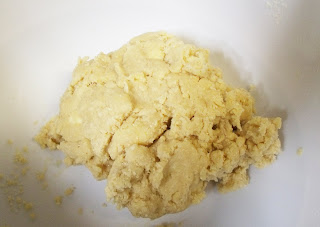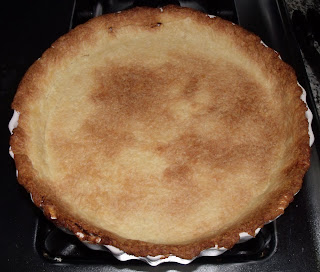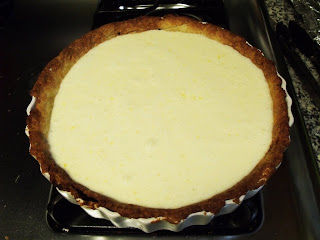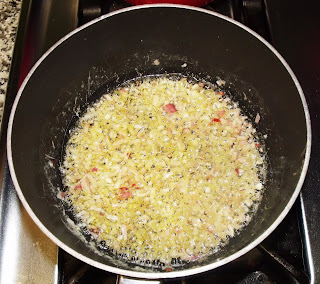I figured a lemon tart would be great, as we have a bunch of lemons to use up, and also because I wanted another shot at the pie crust that I butchered so horribly last year. This time, I wanted to try making it with my hands, in a bowl, as opposed to in the food processor, as I can control the moisture better when making it by hand. I also decided to pay a bit more attention, rather than slapping it together like last time. I did run into some problems, which I'll discuss in their turn.
First problem: recipe calls for pastry flour. I looked this up on the internet, and found that pastry flour is distinguished by having less protein than all purpose flour. (For those who are interested, bread flour has the most protein, then all purpose, then pastry flour, and cake flour has the least protein.) You can make a mix approximating pastry flour by combining all purpose flour and cake flour at something between a 1:1 or 2:1 ratio. I looked for cake flour at the local shop, but of course couldn't find any, so I decided to give it a shot with all purpose flour to see where it gets me. (This is of course very scientific, and will help those of you who can't find pastry or cake flour determine if the recipe is worth trying. Not because I'm lazy. No, no.)
So first I measured out nine grams of flour in my NEW HANDY KITCHEN SCALE WHICH I LOVE HOORAY!
Next, I whisked in salt and sugar for a nice dry mix.
Then, I made a well in the dry mix, and added one cold egg, and one cold stick of unsalted butter, chopped up. (Cold is very important to create a tender, flaky crust, of course.)

I started mixing the bowl with a fork, then gave up and used my hands, as it's the best way to break up the butter and mix it into the dry evenly. You want your hands to be cold, so I rinsed them in cold water from time to time, so the butter didn't melt. After mixing for a little bit, I added a tablespoon and a half of water (which I kept on ice in a bowl) as the recipe suggested. Even then, I found it was too dry, and added another tablespoon of water to the mix. At that point, the dough started coming together in a way that hadn't happened the last time I made this dough, so I could tell that I was doing something right. Once the dough came together (though there were still visible bits of butter in--but that's a good thing) I put it in the fridge for an hour.

Once the dough finished chilling, I put it on a floured mat and started rolling it out. Again, it was clear that I'd done it right this time, as the dough stayed together in one piece instead of becoming a frankencrust. I draped it into the tart pan, and pressed it into the corners.

Rolling out nicely, and...

Victory!
Here's where I ran into problem number two. The recipe for the crust ends here, but the lemon tart recipe starts with an already baked pie crust. So how are you supposed to bake the crust? The book doesn't say! So instead I turned to my baking book (and recent Christmas present) Baking: From My Home to Yours by Dorie Greenspan. She recommends baking her crust recipe at 400 degrees for 25 minutes under foil, then uncovering and baking for 10 minutes for a fully baked crust. So that's what I tried.
The result:

I think that it browned a little too much (the center was nicely golden in patches, but the edges of the crust were a bit too crispy). So next time I might try the same time, but baking at 350 or 375 degrees instead. Anyway, I let the crust cool to room temperature.
Next, I made the filling by combining lemon juice, sugar, eggs and cream, and poured the mix into the crust to bake and set.

Husband J, juicing the lemons in the cuisinart.

Me, mixing the ingredients for the filling. The cream made nice patterns in the egg/sugar mix.
I was a little worried about whether the filling would set properly, as the last time I made a lemon meringue pie it turned into a runny mess, but after about half hour of baking, the tart came out very nice and firm.

I brought it over to Neighbor C's, and we ate it after our takeout.
The verdict... well... I'm not really sold on the tart. The guests at Neighbor Cs said they enjoyed it a lot, and Husband J ate much more than his fair share, but it tasted a little odd to me. It might have been the slightly overbaked crust or the fact that the pie crust is not very sweet when compared to the tart filling, but something about the combo just didn't taste right. It was fine, but not brilliant.
Lessons Learned: Tony, tell us how long to bake your freaking pie crust mmkay??
Next Week: Daube Provençale







